PROBLEMS ON REFLECTION OVER X AXIS
The rule of reflection about x-axis is
(x, y) ==> (x, -y)
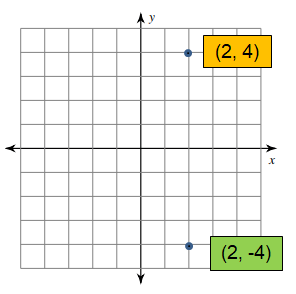
What is preimage ?
Preimage In a transformation, the original figure is called the preimage.
What is image ?
Image In a transformation, the final figure is called the image.
Find the coordinates of the vertices of each figure after the given transformation.
Problem 1 :
Reflection across x axis.
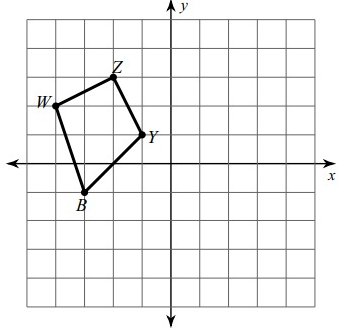
Solution :
By observing the figure, coordinates of the vertices are
B (-3, -1), W (-4, 2), Y (-1, 1) and Z (-2, 3)
B (-3, -1) ==> B’ (-3, 1)
W (-4, 2) ==> W’ (-4, -2)
Y (-1, 1) ==> Y’ (-1, -1)
Z (-2, 3) ==> Z’ (-2, -3)
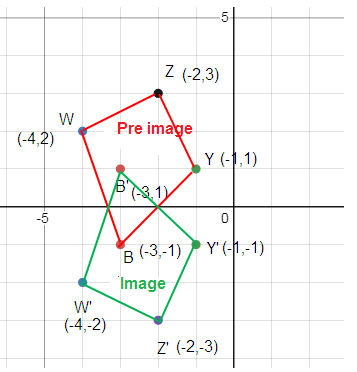
Problem 2 :
Reflection across x axis.
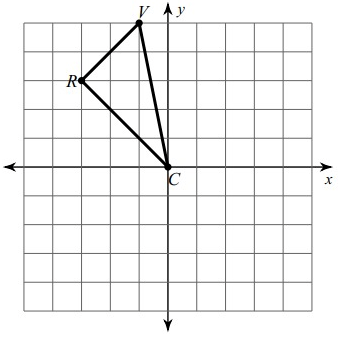
Solution :
By observing the figure, coordinates of the vertices are
V (-1, 5), R (-3, 3) and C (0, 0)
V (-1, 5) ==> V’ (-1, -5)
R (-3, 3) ==> R’ (-4, -3)
C (0, 0) ==> C’ (0, 0)
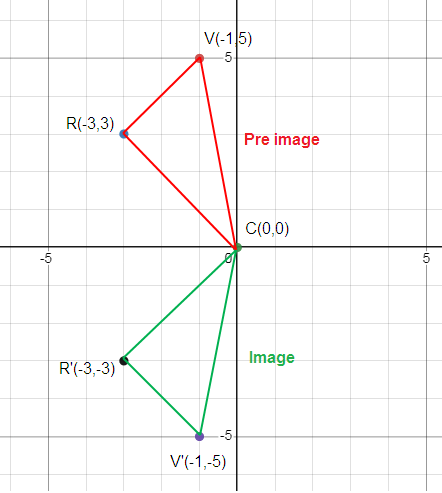
Problem 3 :
Reflection across x axis.
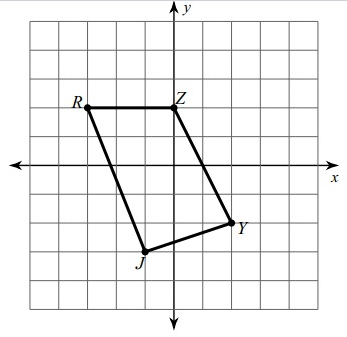
Solution :
By observing the figure, coordinates of the vertices are
R (-3, 2), Z (0, 2), Y (2, -2) and J (-1, -3)
R (-3, 2) ==> R’ (-3, -2)
Z (0, 2) ==> Z’ (-4, -2)
Y (2, -2) ==> Y’ (-1, 2)
J (-1, -3) ==> J’ (-2, 3)
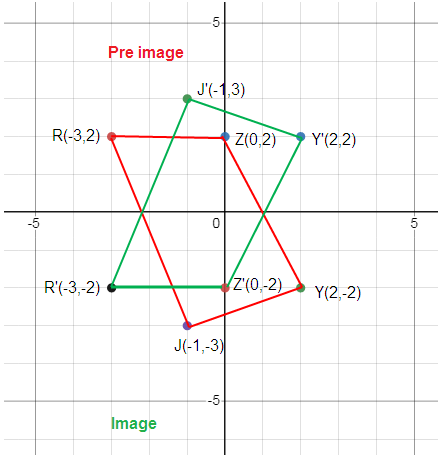
Problem 4:
Reflection across x axis.
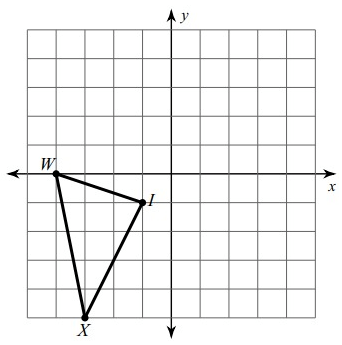
Solution :
By observing the figure, coordinates of the vertices are
W (-4, 0), I (-1, -1) and X (-3, -5)
W (-4, 0) ==> W’ (-4, 0)
I (-1, -1) ==> I’ (-1, 1)
X (-3, -5) ==> X’ (-3, 5)
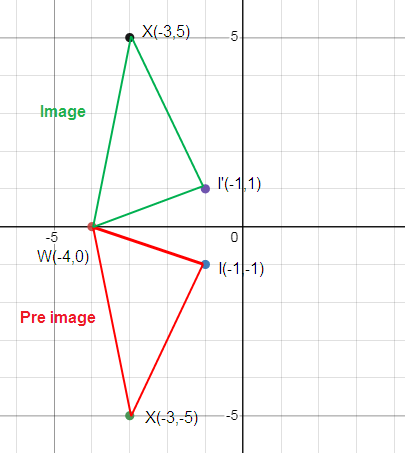
Problem 5 :
Reflection across x axis.
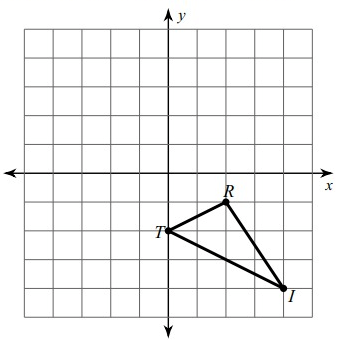
Solution :
By observing the figure, coordinates of the vertices are
R (2, -1), T (0, -2) and I (4, -4)
R (2, -1) ==> R’ (2, 1)
T (0, -2) ==> I’ (0, 2)
I (4, -4) ==> X’ (4, 4)
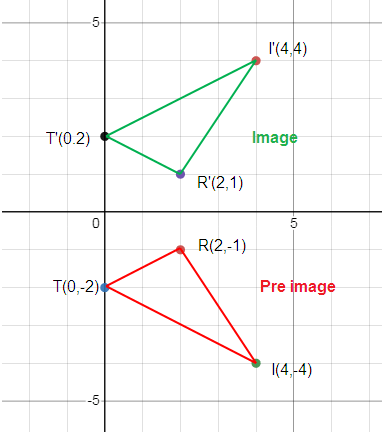
Problem 6 :
Reflection across x axis.
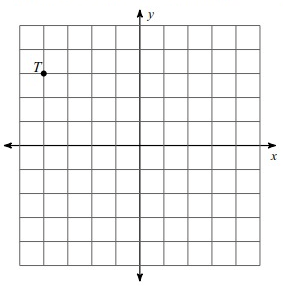
Solution :
Making the point T (-4, 3). Reflection of T across x-axis is
T’ (-4, -3)
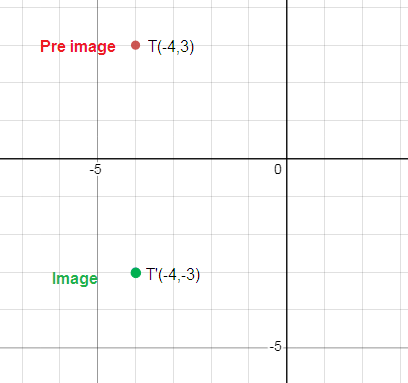
Problem 7 :
Reflection across x axis.
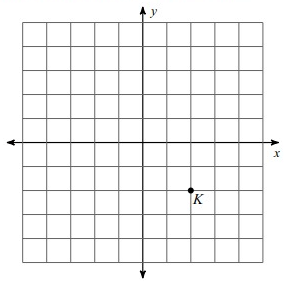
Solution:
Making the point K (2, -2). Reflection of K across x-axis is
K’ (2, 2)
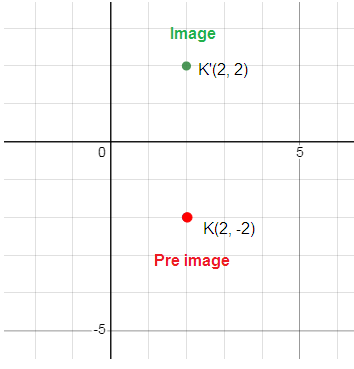
Problem 8 :
Reflection across the x-axis
K (1, -2) L (2, -2) and M (3, -4)
Solution :
Rule:
(x, y) ==> (x, -y)
K (1, -2) ==> K’ (1, 2)
L (2, -2) ==> L’ (2, 2)
M (3, -4) ==> M’ (3, 4)
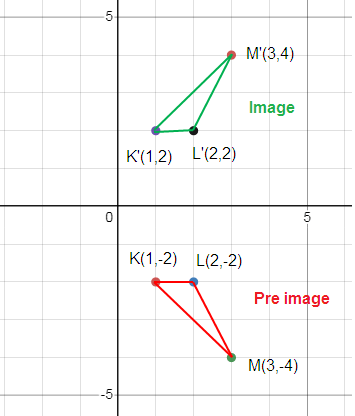
Problem 9 :
Reflection across the x-axis
A (-1, -5), B (-2, -2), C (-1, 0) and D (3, -2)
Solution :
Rule:
(x, y) ==> (x, -y)
A (-1, -5) ==> A’ (-1, 5)
B (-2, -2) ==> B’ (-2, 2)
C (-1, 0) ==> C’ (-1, 0)
D (3, -2) ==> D’ (3, 2)
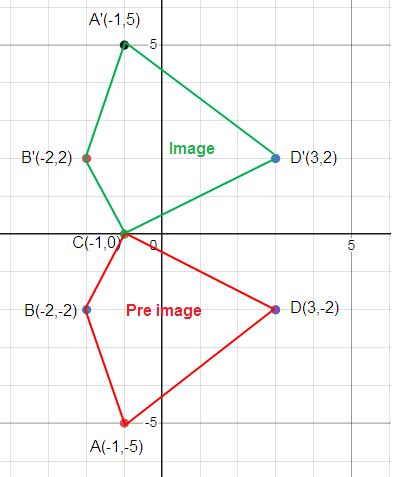
Recent Articles
-
Finding Range of Values Inequality Problems
May 21, 24 08:51 PM
Finding Range of Values Inequality Problems -
Solving Two Step Inequality Word Problems
May 21, 24 08:51 AM
Solving Two Step Inequality Word Problems -
Exponential Function Context and Data Modeling
May 20, 24 10:45 PM
Exponential Function Context and Data Modeling